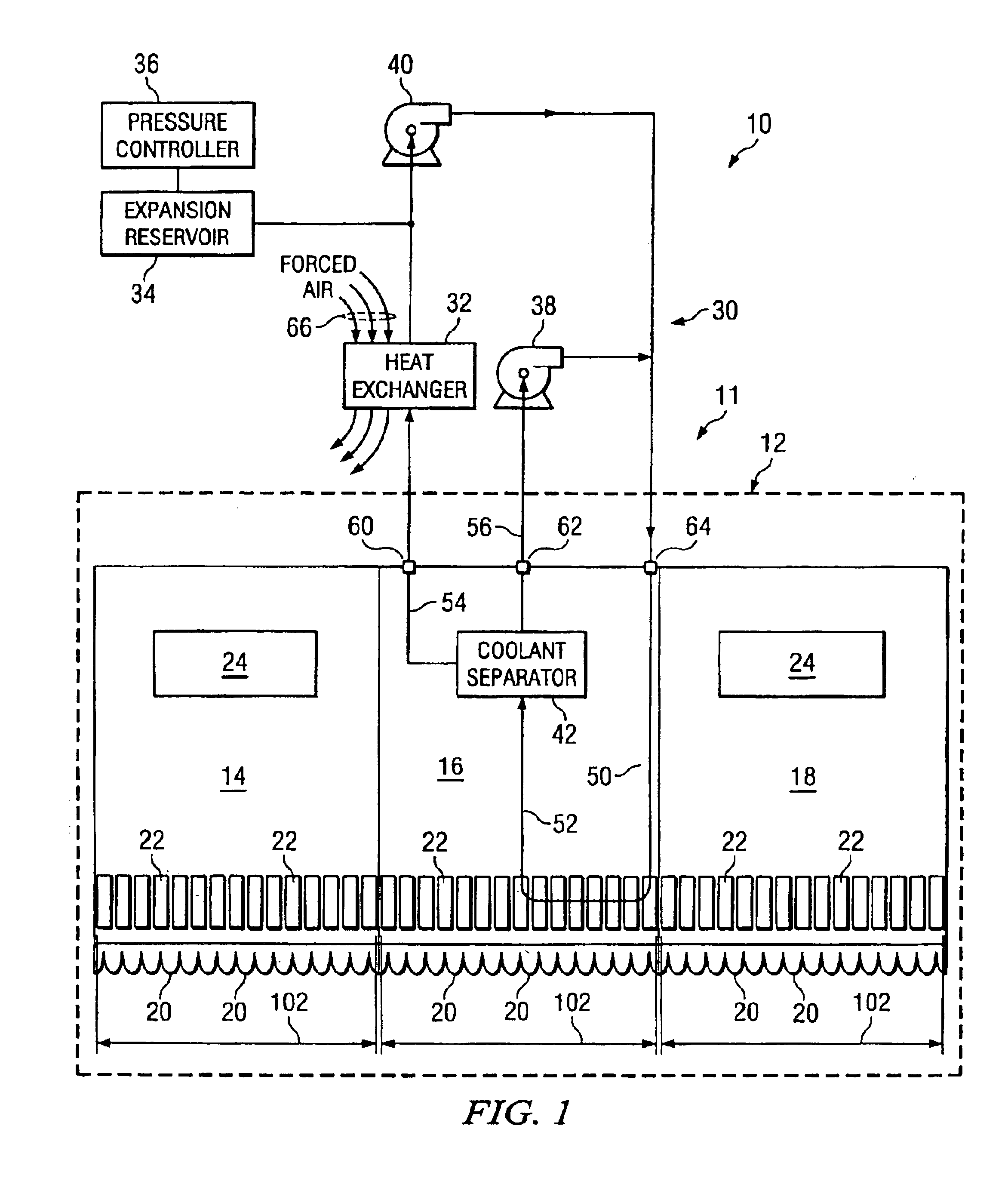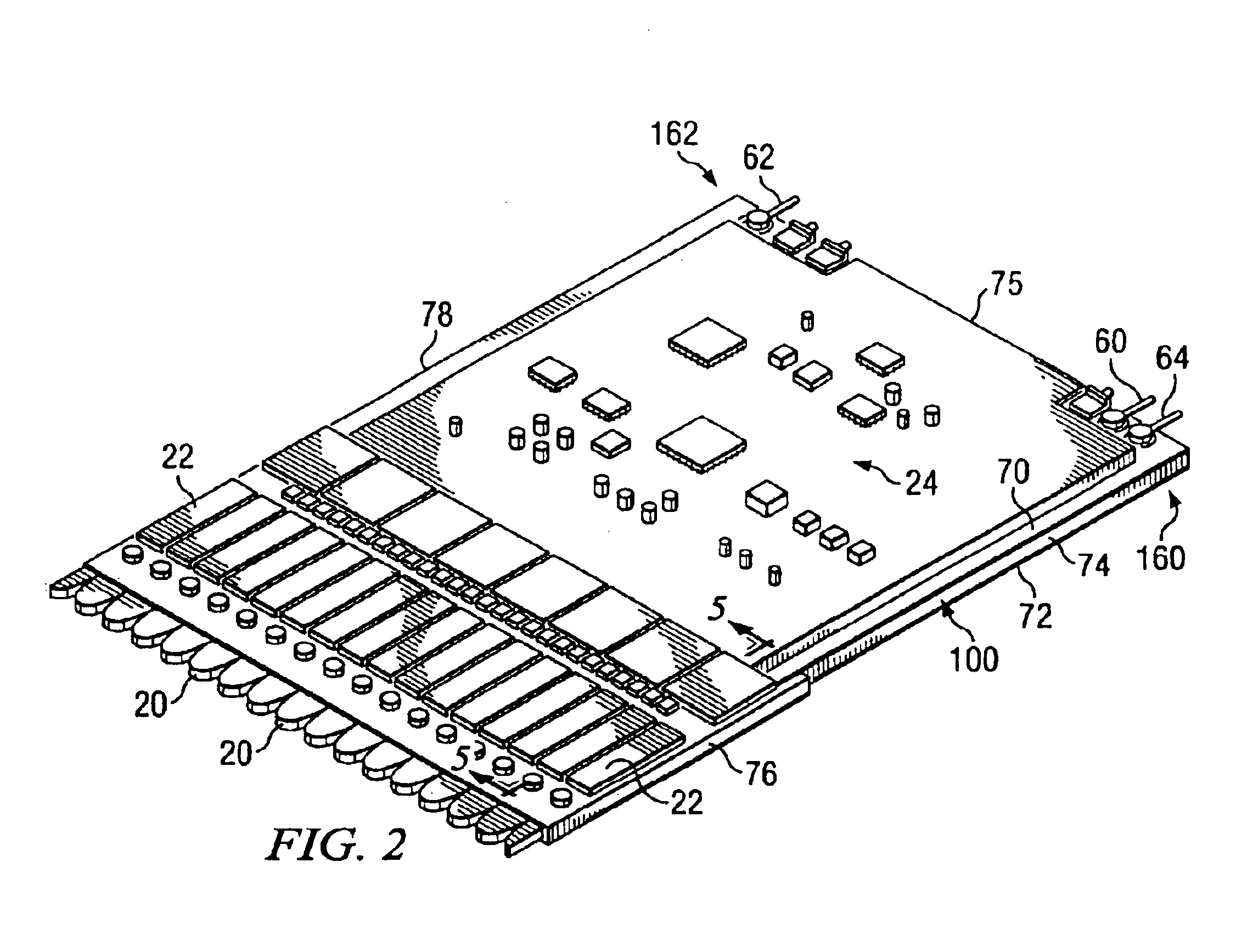Method and apparatus for cooling heat-generating structure
a heat-generating structure and apparatus technology, applied in lighting and heating apparatus, indirect heat exchangers, semiconductor/solid-state device details, etc., can solve the problems of large heat generation, large power consumption, heavy weight, etc., and achieve the effect of efficient cooling of heat-generating structures
- Summary
- Abstract
- Description
- Claims
- Application Information
AI Technical Summary
Benefits of technology
Problems solved by technology
Method used
Image
Examples
Embodiment Construction
[0017]FIG. 1 is a block diagram of an apparatus 10 which includes part of a phased array antenna system 12, and a cooling system 11 for the phased array antenna system 12. The antenna system 12 includes a plurality of identical modular parts that are commonly known as slats, three of which are depicted at 14, 16 and 18. The cooling system 11 is configured to cool one or more slats, so as to remove heat generated by electronic circuitry thereon. For clarity, FIG. 1 shows how the cooling system 11 is configured to cool the slat 16, but the cooling system 11 also cools other slats in a similar manner, including the slats 14 and 18.
[0018]The antenna system 12 includes a two-dimensional array of antenna elements 20, each row of the array of antenna elements 20 being provided on one or more slats. For example, in the embodiment shown in FIG. 1, one row of antenna elements 20 is provided on the slats 14, 16 and 18. The slats 14, 16 and 18 abut each other edge-to-edge to form a continuous r...
PUM
 Login to View More
Login to View More Abstract
Description
Claims
Application Information
 Login to View More
Login to View More - R&D
- Intellectual Property
- Life Sciences
- Materials
- Tech Scout
- Unparalleled Data Quality
- Higher Quality Content
- 60% Fewer Hallucinations
Browse by: Latest US Patents, China's latest patents, Technical Efficacy Thesaurus, Application Domain, Technology Topic, Popular Technical Reports.
© 2025 PatSnap. All rights reserved.Legal|Privacy policy|Modern Slavery Act Transparency Statement|Sitemap|About US| Contact US: help@patsnap.com



